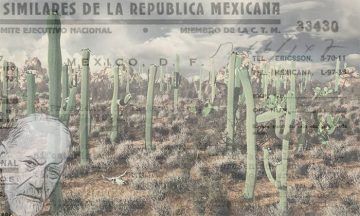Rubén Gallo in The MIT Press Reader:
 In the spring of 1938, the Mexican press reported on the perils faced by Sigmund Freud in post-Anschluss Austria: The Gestapo had raided the offices of the Psychoanalytic Publishing House, searched the apartment at Berggasse 19, and briefly detained his daughter Anna. Freud himself — once reluctant to consider emigration — made up his mind to leave Vienna, but his decision seemed to come too late: obtaining an exit visa had become a nearly impossible ordeal for Austrian Jews. Freud would have been trapped in Vienna had it not been for a group of powerful friends who launched a full-scale diplomatic campaign on his behalf: William Bullitt, the American ambassador to France; Ernest Jones, who lobbied British Members of Parliament; and Princess Marie Bonaparte, who was in direct communication with President Roosevelt himself.
In the spring of 1938, the Mexican press reported on the perils faced by Sigmund Freud in post-Anschluss Austria: The Gestapo had raided the offices of the Psychoanalytic Publishing House, searched the apartment at Berggasse 19, and briefly detained his daughter Anna. Freud himself — once reluctant to consider emigration — made up his mind to leave Vienna, but his decision seemed to come too late: obtaining an exit visa had become a nearly impossible ordeal for Austrian Jews. Freud would have been trapped in Vienna had it not been for a group of powerful friends who launched a full-scale diplomatic campaign on his behalf: William Bullitt, the American ambassador to France; Ernest Jones, who lobbied British Members of Parliament; and Princess Marie Bonaparte, who was in direct communication with President Roosevelt himself.
In Mexico, President Lázaro Cárdenas — one of the most popular leaders in twentieth-century history — had turned his country into a haven for persecuted intellectuals: after the fall of the Spanish Republic, he offered political asylum to thousands of refugees, and Mexico received a massive influx of artists, poets, academics, and philosophers who played a crucial role in postwar culture. In a world threatened by the rise of fascism, Cárdenas opened his nation’s doors to socialists and fellow travelers of all kinds. Leon Trotsky accepted Cárdenas’s invitation and settled in Mexico City in 1937. He would be followed by an impressive lineup of cosmopolitan refugees from Spain, France, Germany, Austria, and many other countries.
More here.
